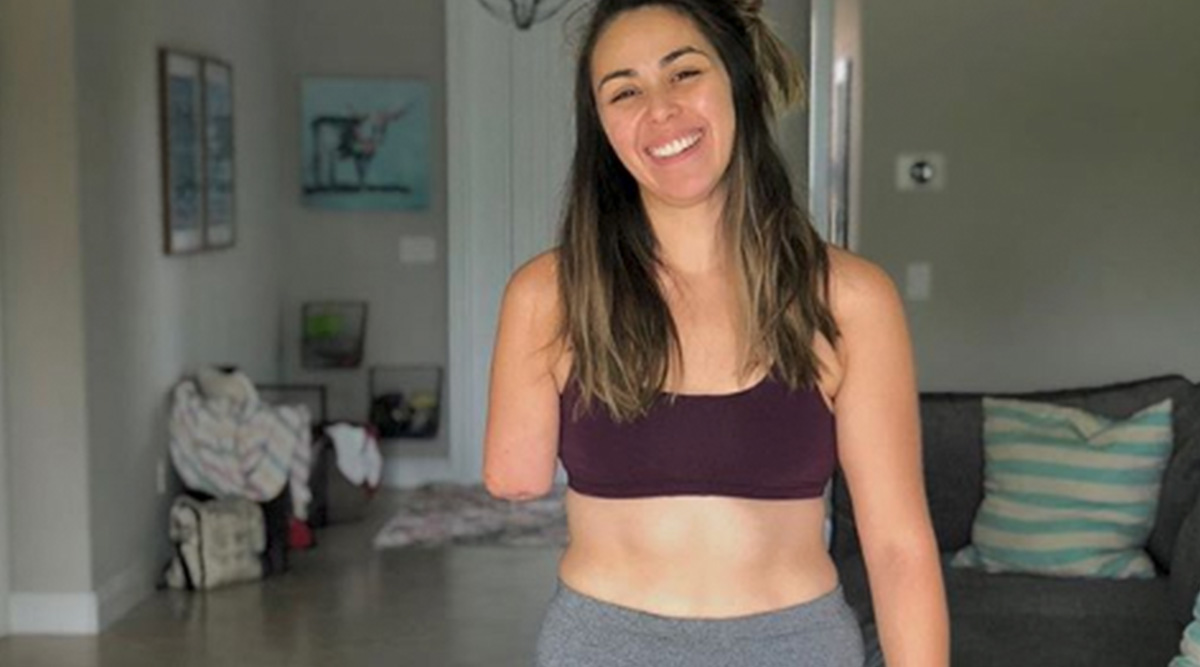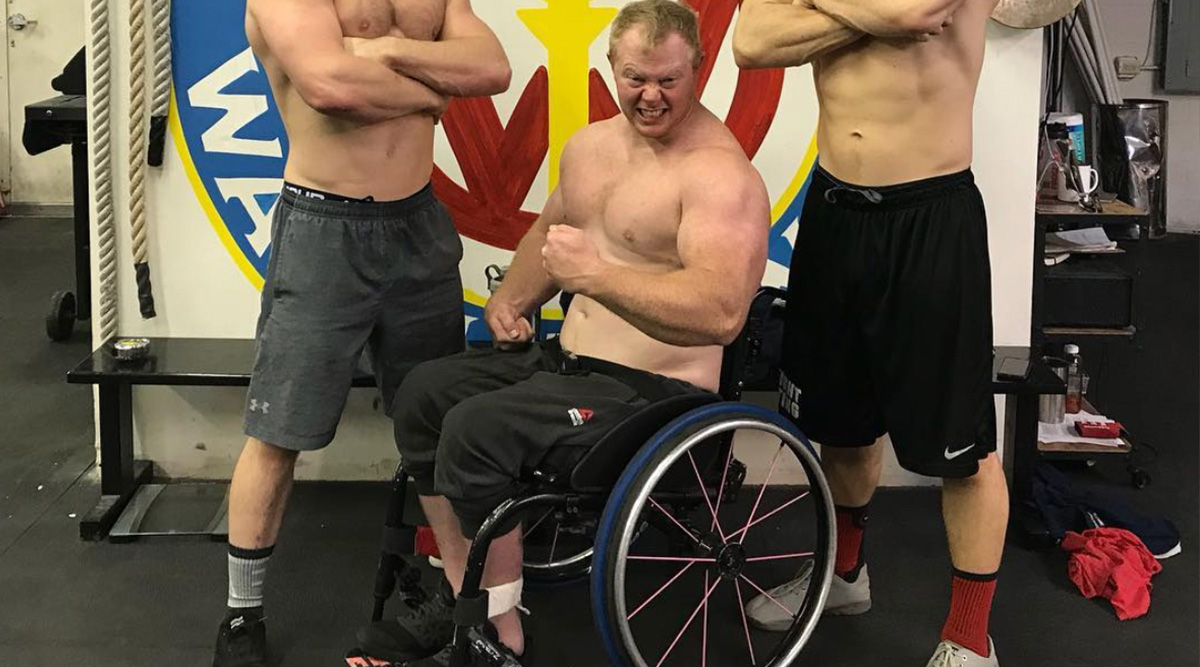One of the things we love most about functional fitness is how everyone is part of the community. Regardless of age or ability level, there’s a WOD for you — and that includes adaptive athletes. These athletes don’t let anything get in their way and have approached their limitations unwilling to accept defeat. The words “I can’t” are only allowed in one sentence: I can’t give up. Here are six of our favorites.
1. Kevin Ogar
When a freak lifting accident left Kevin Ogar paralyzed from the waist down in 2014, the 6’2” competitor had to reframe his focus. He had gone to Regionals the last two years in a row and had his sights set on the Games, but things were definitely going to change.
Leaving CrossFit behind wasn’t an option, though. Instead, he applied himself to learning how to adapt workouts to his changed abilities, and then he started offering adaptive training to others.
Today, Ogar runs his own box, CrossFit Watchtower, and trains a mix of adaptive and non-adaptive athletes alike.
2. Krystal Cantu
Days after Krystal Cantu signed up for her first CrossFit competition, she was on the road with her boyfriend when a tire blew out and they lost control of the vehicle. The damage to her right arm was so severe that it had to be amputated above the elbow.
A month after the accident, she was back at her box, relearning how to do movements — snatch, clean and jerk, deadlift, front and back squat — with one arm. It’s safe to say she successfully found her balance: she now lifts heavier weights than she ever did with two arms and even competes.
3. Wesley Hamilton
Tunnel vision “Wes” you didn’t come here to compete against them, your fight is from within. Remember who’s your competition and kill it?? #buildyourself #adaptiveathlete #adaptivecrossfit #immyonlycompetition #disabledbutnotreally #mydisabledtruth pic.twitter.com/n7JjfA0mQ7
— Wesley Hamilton (@iamweshamilton) February 17, 2019
At age 24, Wesley Hamilton was 5’4” and 230 pounds when he was shot twice by a person he had never met. He spent three weeks in the ICU and woke up paralyzed.
Overweight, depressed, and confined to a wheelchair, he found inspiration in his two-year-old daughter and his desire to be the best dad he could be. He changed his diet and started working out, and in eight months, lost 100 pounds.
Since then, he has competed in adaptive CrossFit competitions including the Working Wounded Games, WOD 4 Wheels, and Wodapalooza, where he took second place in last year’s adaptive division.
4. Steph “The Hammer” Hammerman
Diagnosed at two weeks old with spastic cerebral palsy, Steph “The Hammer” Hammerman has dealt with physical challenges her whole life. She found CrossFit in 2012 and started using it to become a stronger hand cyclist. A year later, she became the first certified female CrossFit coach with cerebral palsy.
She has since helped to establish competition opportunities for adaptive athletes, both through the Adaptive Division at Wodapalooza Fitness Festival and the WheelWOD Open. Along the way, she has fought and beaten Hodgkin’s lymphoma and spoken openly about body image and self-esteem.
5. Corey Reed
A late night car accident changed Corey Reed’s life forever. He was just 23 years old when a night out with friends ended in a collision with a tree. Reed didn’t wake up for a month, and when he did, his right leg was amputated below the knee and he was completely blind.
Escaping the darkness that surrounded him didn’t happen immediately, but eventually, he started getting back into snowboarding and wakeboarding, two sports he’d enjoyed his whole life. Then he tried CrossFit, with the plan of using it to condition for his other sports. It only took one class to get him thinking about competing.
Since then, Reed has competed with CrossFit Los Angeles as the first adaptive athlete in SICest of the Southwest 2012. He’s also competed in adaptive CrossFit competitions like the Working Wounded Games.
6. Zack Ruhl
Born without femurs due to a congenital defect, Zack Ruhl has been a double amputee since age two — and he’s never lived with prosthetics. He rolled around on a skateboard his whole childhood and didn’t use a wheelchair at all until adulthood. Life without legs is Ruhl’s normal — it’s not something he’s ever been depressed about — but that doesn’t make his accomplishments any less impressive.
After growing up playing football (he would literally crawl around the field to make tackles), Ruhl found himself getting bored with the typical bodybuilding routine. When he found CrossFit, it reawakened his love of fitness. His abilities differ from other wheelchair athletes due to the fact that he’s not paralyzed, meaning his core is still active throughout his torso, so handstand push-ups while strapped in his wheelchair are a regular part of his workouts.
Main image: Krystal Cantu/Instagram
















